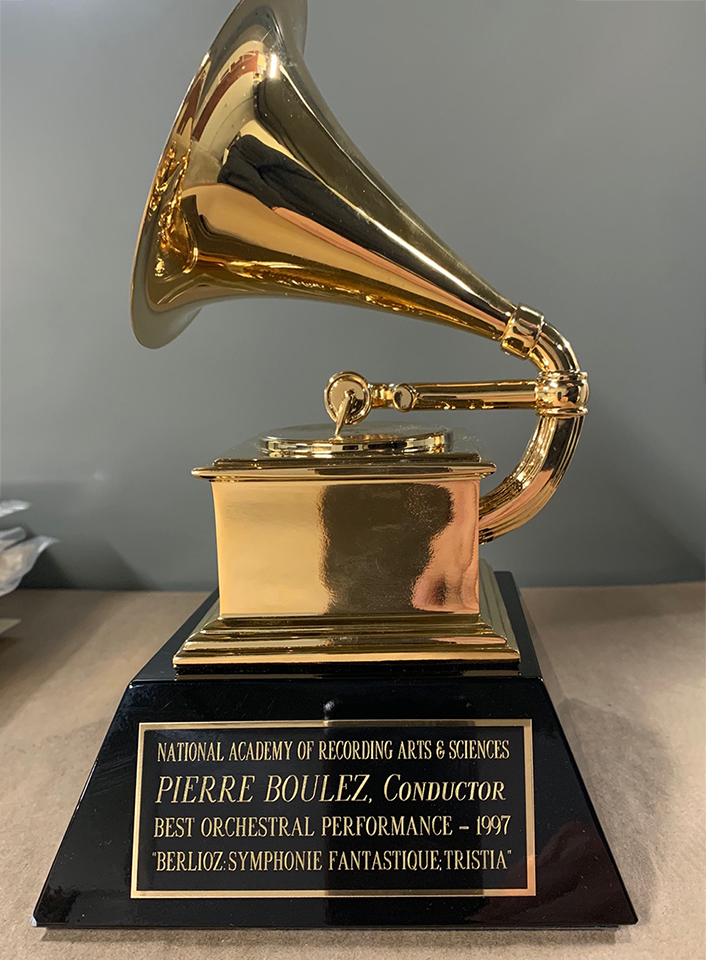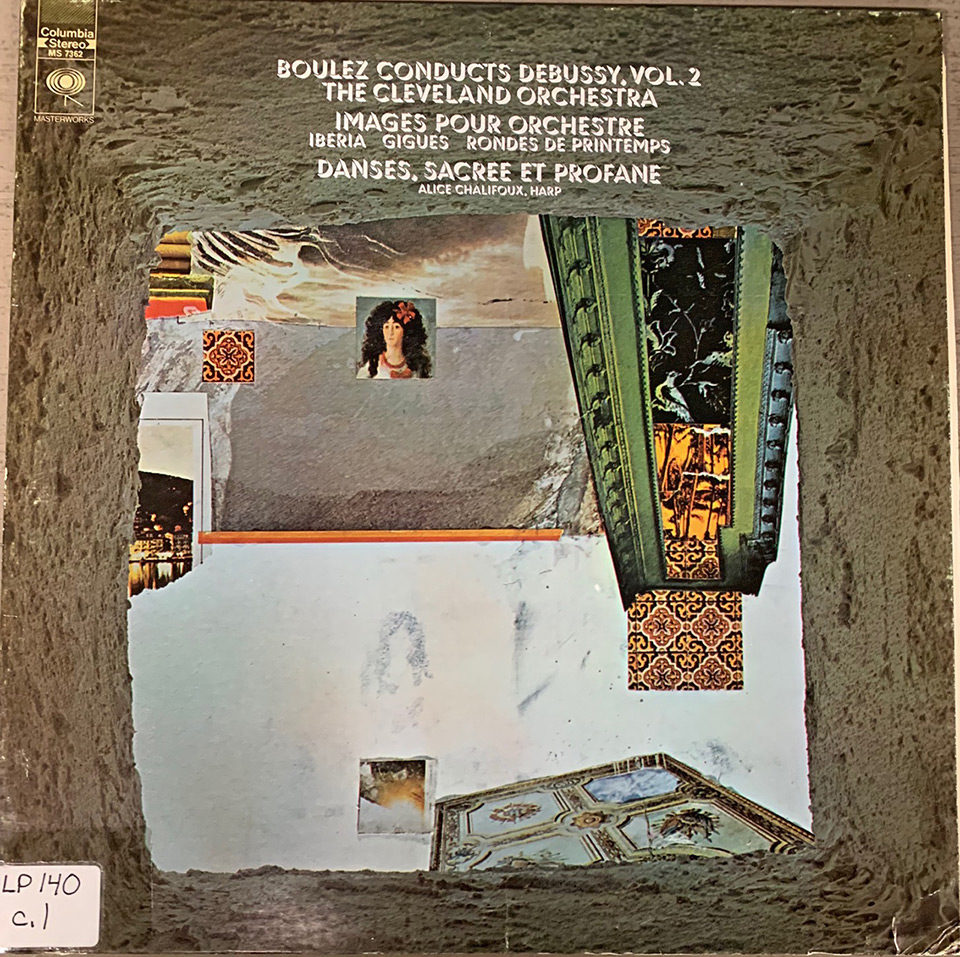March 28, 2019
When, in 1877, Thomas Edison submitted a patent petition for the phonograph, he predicted with uncanny prescience that the device would most impact music listening. Today, many will even argue that recording technologies have redefined the medium altogether. Either way, it comes as no surprise that the world’s most prestigious award for music-making, the Grammy, takes its name from the gramophone, a name later assigned to Edison’s device. The Grammy Awards celebrate artists whose hits have gained popular embrace by way of recordings. At the twelfth annual awards ceremony in 1970, The Cleveland Orchestra under Pierre Boulez received its first Grammy for its recording of Debussy’s Images Pour Orchestra with Columbia Records. And although little ink seems to have been spilled on the accolade, plenty was said about what success in the recording industry would entail for performance back home.
The Cleveland Orchestra was quick to make its way onto records, producing its first album in 1924, only six years after the first-ever commercial recording of a full orchestra and the orchestra’s inception. During George Szell’s tenure (1946-1970), recording was a top priority, not only because record players had become a mainstay of the American home, but also because Szell took command of the orchestra with a vision for international renown to which recording was critical. And, indeed, Szell’s time at the podium, during which the orchestra received its first Grammy, is remembered as something of a golden age. At the same time, however, the orchestra found itself caught in a pivotal cultural crosscurrent: live performance saw itself threatened by the burgeoning recording industry. If music-recording continues to be a contentious issue today, it is only because the drastic reconstruction of listening culture that its invention effected still looms.
Let’s take a look at the year in which The Cleveland Orchestra won its first Grammy. While the orchestra’s name recognition abroad soared, the press in Cleveland called attention to issues with performance culture. On February 24, 1970, a full-page spread in the Plain Dealer called on Severance Hall to make several changes for the sake of preserving the community’s rich performance scene. Among the requests were lowering ticket costs, eliminating dress regulations, providing complimentary transportation, featuring variety concerts that included everything from opera to Indian classical to rock and roll, and introducing multimedia productions. As this writer saw it, the practicality of at-home music listening, in many ways, obviated the need for live performances: “why go out if you can listen to whatever you please in the comfort of your home?” In an article appearing in the Plain Press, reporter Hellen Bell wrote that “young people know classical music — not from the concert hall — but from recordings.” The time had come for live performances to take some cues from at-home listening: variety, informality, and affordability. And The Musical Arts association seems to have obliged: In 1970, an article, rather ambiguous in its tone, heralded a concert for orchestra and jazz accordion at Severance with the headline: “Squeeze Box Trying to Go Classical?"
It is difficult to know why The Cleveland Orchestra’s first Grammy received little attention at home. Amid discussions of a performance culture in peril, The Cleveland Orchestra’s win only received minimal mention in celebrations of some of that year’s other winners: Joni Mitchell, Johnny Cash, and The Beatles. To be sure, winning a Grammy meant you had made it big, but The Cleveland Orchestra’s victorious ingression into the recording industry spelled trouble for live performance, or so the consensus seems to have been. Changes might have been necessary but time has since proven that live performance and recording can coexist: Performances at Severance are ongoing and The Cleveland Orchestra has been nominated for twenty-eight Grammys and has won six since its first.

Grammy awarded to Pierre Boulez in 1997 (The Cleveland Orchestra is not in possession of the 1969 award).

Front cover of sleeve of The Cleveland Orchestra’s award winning record, “Boulez Conducts Debussy, Vol. 2: The Cleveland Orchestra,” released by Columbia Records in 1969.
Claude Debussy: Images pour orchestre, Mvt I: “Gigues” (Excerpt)
The Cleveland Orchestra, Pierre Boulez
Recorded: November 17, 1967
Released: Columbia Records, 1969.
—Michael Quinn
Michael Quinn is a writer and research fellow in The Cleveland Orchestra Archives for the 2018-19 season. He is pursuing his masters in historical performance practice at Case Western Reserve University.